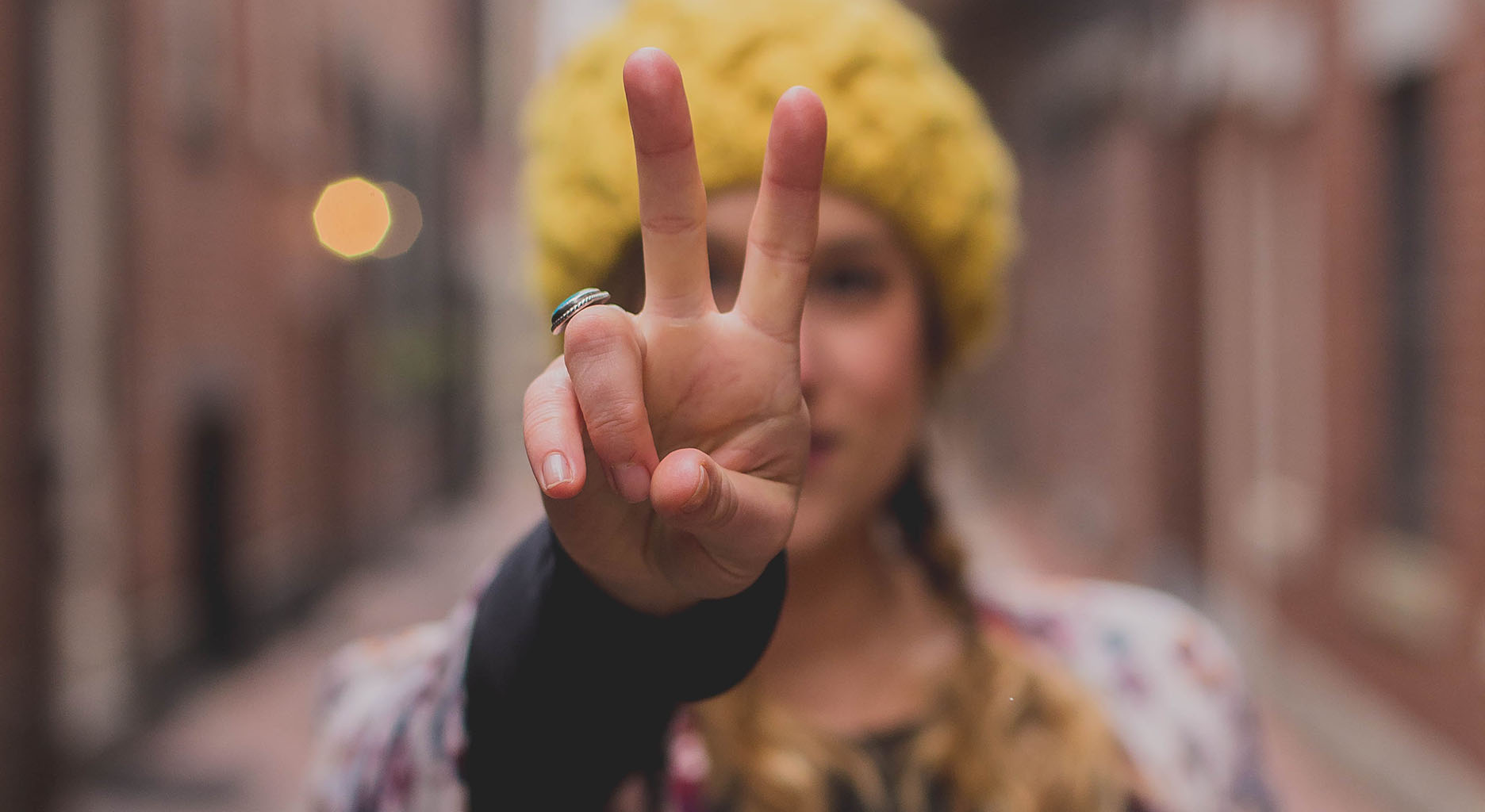Some journeys have clear destinations and others are filled with unexpected turns. We all face challenges on our paths to achieving our goals. Sometimes, negative thoughts or setbacks can leave…

Building peace
Peace is not just an aspiration – it is a reality that we can create together. Peace is not a destination – it is a path we choose to walk, one step at a time. Peace is not just the absence of strife – it is also about building a world where everyone has the opportunity to thrive, feel safe and respected. It is a state of harmony and well-being. It is the foundation for building a just, equitable, and thriving world. Peace is a necessity.
Creating a peaceful world requires us to learn, adapt, and work together. We need to be committed to peace, willing to talk, and dedicated to addressing the root causes of conflict and violence.
A shared desire for peace
Most people, no matter what they believe or where they come from, want a peaceful world. Peace allows us to thrive and reach our full potential. When the need for peace is fulfilled, people feel happy and content. Peace reduces stress and anxiety and promotes well-being. Peace helps us live longer, happier lives. When there is peace, we can also pay more attention to other global challenges like climate change and inequality.
Peace is something we can all work towards. Together, we can make peace a reality – we can create a world where every life is valued, and humanity shines.
Understanding the roots of violence
Violating the rights of others is not true conflict.
While the majority of people yearn for a peaceful world where differences can be resolved through dialogue and understanding, a minority of people are driven by self-interest and power. These individuals, often motivated by greed, ambition, or personal gain, pose a significant obstacle to peace-building efforts. Recognizing the existence and rising trend of this group is crucial, as their actions can inflict harm upon innocent individuals and communities. To create a world where peace prevails for all, we must also develop strategies to address the detrimental forces driven by self-interest.
The recent loss of life in ongoing conflicts reminds us of the urgent need for peace. We need to wake up to the impact of violence and the value of human life. We can’t stay silent. We need to speak up, demand an end to hostilities, and advocate for peace initiatives.
Establishing peace with one’s adversaries is a complex and challenging endeavor, but it is also one of the most transformative and rewarding acts one can undertake. It requires a willingness to confront our fears, prejudices, and misconceptions, and to engage with those we perceive as adversaries with empathy, understanding, and a genuine desire for reconciliation.
As we cultivate peace within ourselves, in our relationships, in our communities and beyond, we lay the foundation for a more harmonious and just world.
In situations where one party seeks peace while the other inflicts harm for self-interest, it is not a genuine conflict but rather an imbalance of power and a violation of fundamental human rights.
Some actions that can be classified as human rights violations:
- Severely restricted the movement of people and goods, hindering access to essential resources like food, water, and healthcare.
- Actions that result in a humanitarian crisis, with widespread poverty, malnutrition, and unemployment.
- The disproportionate use of force- causing significant civilian casualties and damage to infrastructure, including hospitals, schools, and homes.
- Restrictions on freedom of expression and assembly, leading to the detention and harassment of journalists, activists, and political opponents
- Disproportionate use of use of force.
- Limited access to an independent and impartial justice system, making it difficult to hold those responsible for human rights violations accountable.
It is crucial to address underlying destructive behaviors that hinder peace. Those who use violence often believe it’s the only way to reach their goals or protect themselves. Understanding these motivations is crucial for addressing conflict and promoting peace. People may choose to violate the rights of others for various reasons, including:
- Seeking power: Some commit violence out of self-interest and use conflict to gain power or influence – they may try to disguise their violations as a just cause.
- Moral justifications: Some believe that conflict is necessary to achieve their moral goals, often stemming from perceived injustices or threats to their values.
- Self-preservation or identity assertion: Some individuals or groups may feel threatened and resort to conflict to protect themselves or assert their identity.
- Financial benefits: Some may profit financially from conflict, either directly through war profiteering or indirectly from controlling resources or territory.
- Historical injustice: Some may be trapped in a cycle of resentment and bitterness due to past hurts and grievances. Resentment prevents forward movement towards true peace.
- Autocratic-mentality: Autocrats or cult leaders and their followers may not believe in anything other than getting their way. They pose a danger, while using projection, conspiracies and spread misinformation. They commit moral-based injustice, fabricate grievances, spread lies and gas-light innocent people. They may try to dismantle democratic systems and institutions and replace them with authoritarianism and install loyalists in positions of authority. They may develop a willingness to do the things that they know to be wrong.
When abuse or violence is inflicted upon an innocent party, it is essential to identify the aggressors and hold them accountable for their actions. The innocent party should not be expected to tolerate the aggressor’s abuse or engage in false equivalence.
Under such circumstances, the primary focus should be on safeguarding the innocent party, preventing further harm, and bringing the perpetrator to justice. This may involve pursuing legal recourse, advocating for support services, and establishing a network of safety and protection.
Peace requires presence of justice, equality, and respect for human rights. True peace cannot exist where one party is subjected to abuse and violence.
People who consider themselves moral may use violence as a means to an end. This moral-based violence paradox can be explained by cognitive dissonance, where people justify their violence as necessary for a higher cause. They also dehumanise of others and temporarily suspend their true moral inhibitions.
It is important to remember that violence is never the answer. There are always other, more constructive ways to resolve conflict.
Building a bridge to a brighter future
Where do we go from here? The journey of building peace is not easy, but it’s worth it. It leads to a brighter future where humanity can thrive. Throughout history, people have sought to build and maintain peace in various ways – using diplomacy, conflict resolution, education and laws. The first steps towards peace are de-escalation.
In a war, this usually means agreeing to a ceasefire. We need to stop fighting and give diplomacy a chance. To achieve peace, we need to identify the root causes if strife, like fear, misunderstanding, or self-interest of an adversary. We need to promote dialogue, build trust, understanding, and a commitment to justice. We need to embrace non-violence, share resources, and challenge the systems that promote injustice.
By understanding the reasons behind violence, we can work to prevent it and create a more peaceful world.
Dealing with irreconcilable differences peacefully
When we are faced with irreconcilable differences, it’s crucial to approach the situation with respect and understanding. We need to focus on open and honest communication, actively listening to the other person’s perspective without judgment. We need to seek common ground and explore areas of agreement, even if they seem small.
Compromise may be necessary, but it should be a two-way street where both parties feel heard and valued. We need to remember that the goal is not to win or lose, but to find a solution that works for everyone involved – a win-win. Professional mediation may be very helpful to facilitate a constructive dialogue and reach a peaceful resolution and even a win-win partnership.
Meditation for peace
I am in a quiet and comfortable space where I can go into a state of deep relaxation. As I settle into silence, I notice breath going in and breath going out – a very gentle rhythm that is calming and relaxing.
I imagine myself standing in a tranquil place. I let the tranquility of the scene wash over and through me. I feel a sense of calm and serenity within me. I let go of any lingering tension, allowing it to dissolve.
I imagine a light of peace, wash over and through me like a wave, soothing my mind and body. I feel the peace permeate every cell of my being, creating a sense of harmony and well-being.
Through this meditation, I will reflect on the potential consequences of my actions, and cultivate a deep understanding of my own moral compass and my capacity for compassion.
I contemplate various perspectives on what peace means:
- I believe that compassion bridges differences and promotes
- I believe in choosing non-violence as the way to resolve conflict and build a just society.
- I believe that peace builds connections of mutual respect.
I contemplate true morality
In the stillness of my mind, I examine my beliefs about violence and morality, questioning any justifications to rationalize morality-based violence.
I bring to mind instances in history where violence has been used in the name of morality. I reflect on the motives behind these actions, the suffering they caused, and the long-lasting impact they left on individuals and societies.
I believe that we can navigate the paradox of morality-based violence.
We can break free from paradoxical morality-based violence and discrimination by challenging distorted beliefs, cultivating compassion, engaging in critical thinking, and aligning our inner compass with peace.
- Non-violence is the true path to morality.
- Compassion helps us understand the impact of our actions on others, while critical thinking challenges our beliefs and assumptions.
- We can encourage one-another to strive for a world where compassion triumphs over violence, where righteousness is measured by the well-being of all, and where peace prevails.
- Breaking free from this mentality takes courage, critical thinking, and a strong commitment to personal integrity.
I challenge distorted beliefs
I break free from the paradox of morality-based violence. I challenge the distorted beliefs that underlie it. I believe that true morality lies in upholding the well-being of all, not just those who align with our beliefs.
- I believe that an us-versus-them mentality is a simplistic and divisive way of viewing the world.
- I believe that violence, even in pursuit of a perceived higher cause, diminishes our moral standing.
- I believe that dehumanising others as a means to justify violence is a betrayal of our shared humanity. Dehumanisation is the biggest threat to stability and peace in the world today.
- I will not blindly adhere to my own moral compass without considering the consequences for others.
- The key to peace is knowing that all justifications for moral-based violence can be dismantled.
With a calm mind, I further examine beliefs about violence and morality
Authoritarianism and cults often exploit paradoxical moral standings, redefining morality and disguising human rights violations to suit their own agenda.
Violation is a cycle that leads to more violation. I break the cycle of violation by advocating for and always choosing peace over violence and refusing to dehumanize others.
- I think about a time when violence was used in the name of good.
- I want to be free from any ideas that there can be a moral justification for violence.
- I am committed to contributing to a more peaceful world.
- Every day, I reflect on interactions with adversaries, and actions of adversaries.
- I believe that I am capable of building bridges with
- I embrace compassion and release myself from anger and resentment.
- I move on from the past. I let go of anger and fear, I embrace inner peace.
- I recognize the challenges I am facing and I acknowledge my
- I explore what it means to have a true moral compass.
- I develop my own moral compass and stand up for what we believe in.
- I choose non-violence as the path to resolving conflict and creating a just society.
- I believe in the power of understanding to bridge differences and foster peace.
- I question the excuses that was used to justify harming another human being.
- What were the reasons behind the actions? Was it in the name of good?
- I acknowledge the consequences of harm – the pain and lasting damage
- I challenge double standards and justifications for harmful behavior.
- I explore my ability to be compassionate and understanding.
- I mentally picture my adversaries as human beings, just like me.
- I extend loving-kindness and compassion to all living beings.
- I seek out different perspectives and embrace compassion.
- I contribute to a world of reconciliation and harmony.
- I celebrate my successes, no matter how small.
I repeat the following affirmation silently to myself:
- I seek to understand.
- I acknowledge all human suffering.
- I bring to mind to my adversaries and visualize them as human beings, just like me.
- I affirm my commitment to compassion, the cornerstone of a peaceful world.
- I extend compassion to all living beings.
- I recognize that my adversary are also human beings.
- I extend compassion and understanding to my adversaries.
- I listen to and acknowledge perspectives of others.
- I stand for and advocate for understanding and tolerance.
- I choose kind and gentle language.
- I let go of any anger or resentment.
- I am calm and centered.
- I extend loving-kindness and compassion.
- I choose to coexist peacefully with all beings.
- I radiate peace to all who come into my presence.
- I carry the essence of peace in me.
- I radiate peace in my thoughts, words, and actions.
- I choose peace in my interactions with others.
- I seek dialogue and common ground.
- I choose peace over conflict.
- I contribute to a peaceful world.
- I am a beacon of peace.
- I am filled with peace.
I imagine a light extending from my heart to the hearts of my fellow human beings, connecting us. Seeing this light fills me with a sense of understanding and compassion. I strengthen my dedication to non-violence, reminding myself that compassion, broadened perspectives, and understanding are the real tools for change.
I feel how the sensation of peace and harmony deepens and expands within me. When I am ready, I end my meditation by bringing my awareness to my physical body, carrying within me the essence of peace.




This Post Has 0 Comments